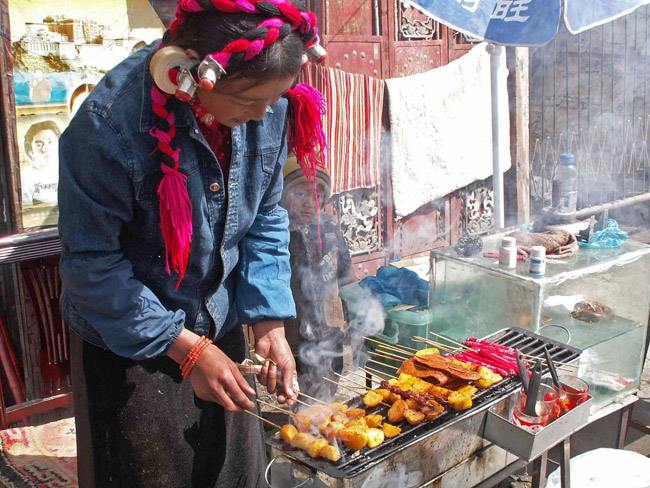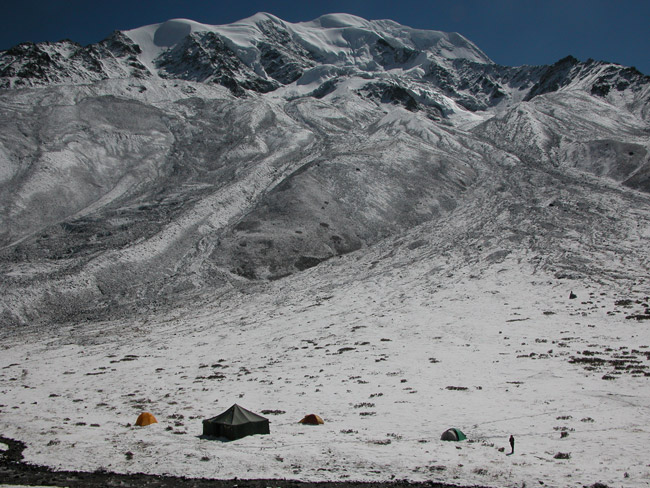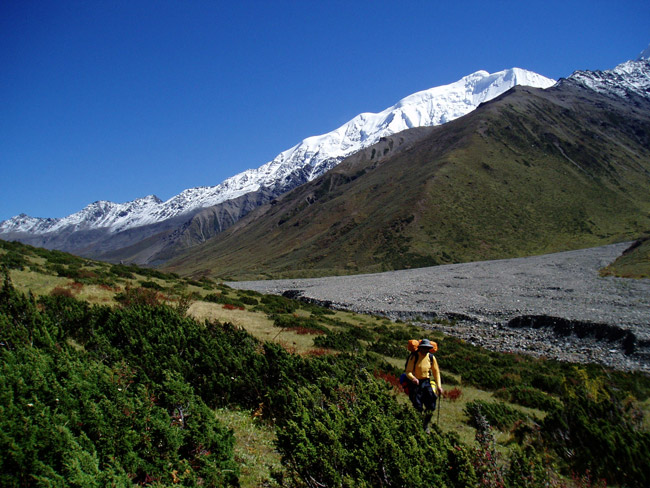Reddomaine Expedition and Monastery Trek
Overview
Southwest China and eastern Tibet have one of the largest concentrations of the world's remaining un-climbed mountains. Ranges of young, sharply etched peaks with beautiful rock faces and pristine glaciers still await their first exploration. This region is called Kham by its Tibetan inhabitants, and was only recently opened by the Chinese government to outside visitors.
AAI's Experience in the Region
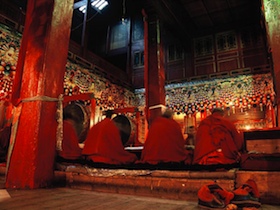
Monks of the Kangding Monastery during their morning sutras. Guy Sgan Cohen
Building on the accomplishments and experience from a series of explorations to the area in the past four years - including the first ascent of Dogonomba and second ascent of Reddomaine - we are again leading expeditions into the Hengduan Mountain Range. This range lies to the east of the Himalaya and stretches from northern Myanmar along Tibet's eastern border to the northern part of China's Sichuan Province.
Our program includes significant interaction with both Chinese and Tibetan cultures, several days of acclimatization while trekking, and the opportunity to climb a spectacular 6100 meter peak.
In addition to mountaineering, our experiences will include remote Tibetan villages and monasteries, rhododendron and holly forests, pristine sub-alpine and alpine zones, and a little-explored realm of glaciers and granite peaks.
Reddomaine Expedition and Monastery Trek
Itinerary
This will be AAI's fifth expedition exploring the Daxue Shan, meaning "big snow mountains." This range is famous for the towering pyramid of Minya Konka, southwest China's highest peak at 24,790 feet (7556 meters). From Chengdu, we will drive to the Tibetan town of Kangding. On our trek into the heart of the range, we'll pass several beautiful 16,000 to 21,000-foot peaks.
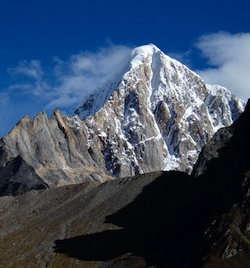
Little Gongga as it is known by locals, is one of the spectacular peaks we pass on the approach to Reddomaine.
Andy Bourne
Our plan is to make the third ascent of 20,050-foot Reddomaine. The approach to our 14,500-foot base camp is via open sub-alpine terrain and beautiful glacier-carved valleys where Tibetan yak herders still graze their herds while living in tents made from yak hair.
After getting to highcamp by 2000 feet of steep scrambling, our route will first involve gaining the west ridge via a 1800 foot steep couloir. From the top of the couloir, the route to the summit will be 2000-2500 feet of steep snow and ice on an exposed ridge.
After the climb, we have the opportunity to trek down valley to the Gongga Monastery. Over 600 years old, this monastery sits at the foot of the hulking Minya Konka. We spend one night here before making our way back to basecamp and then back out to Kangding.
Reddomaine Expedition and Monastery Trek
Cost and Details
$11,639
- Prices are based on a minimum of 4 people per trip.
- Call for pricing on smaller groups,
Max Ratio - 4:2 (Climber:Guide)
Capacity - 4
Dates
Please contact the AAI Office for dates and additional information.
Prerequisites
Flight Information
Flights should be arranged to arrive in Chengdu, Sichuan on the first scheduled day of the program. Departing flights from Chengdu can be arranged the day after the last scheduled day.
Program Cost Inclusions and Exclusions
Inclusions:
Lodging (hotels and tents on a shared basis) during the dates of the program; all meals; group cooking equipment; admissions to museums and national parks; group cooking equipment, and pack horses.
Exclusions:
Airfare; personal equipment; government and airport taxes; Chinese travel visa; inoculations; personal insurance; excess baggage; gratuities to guides.
Reddomaine Expedition and Monastery Trek
Related Courses
Program Finder




